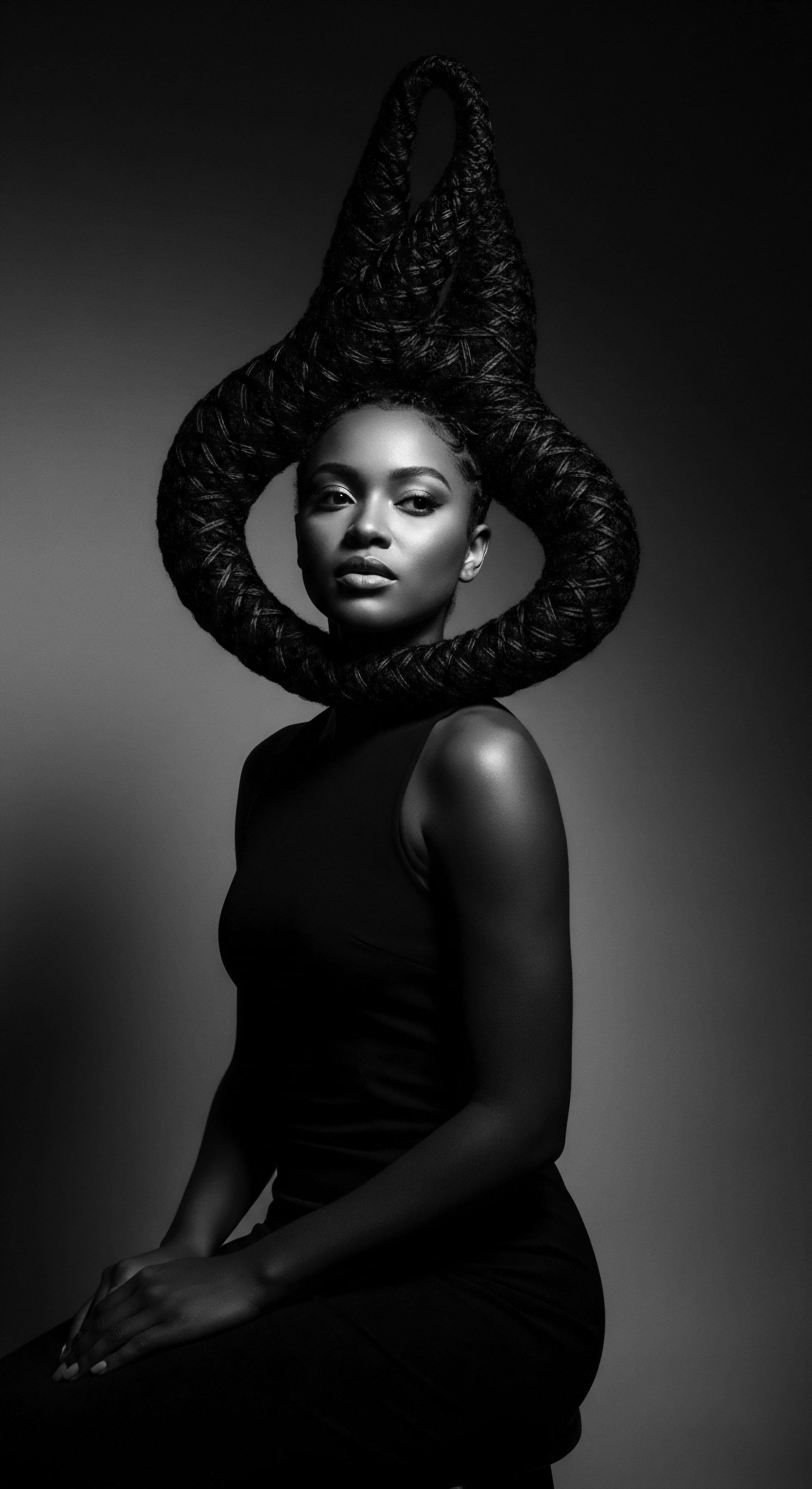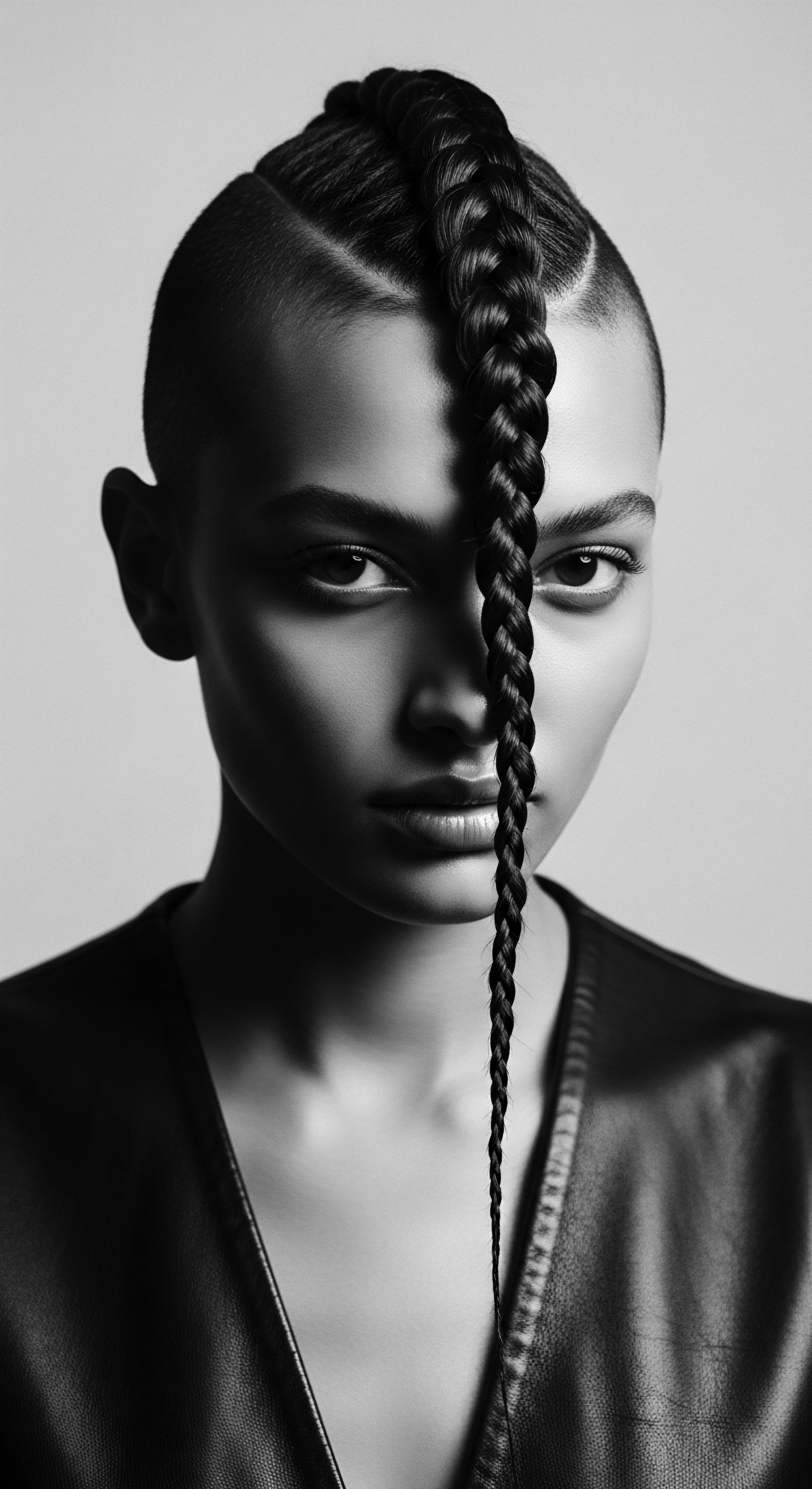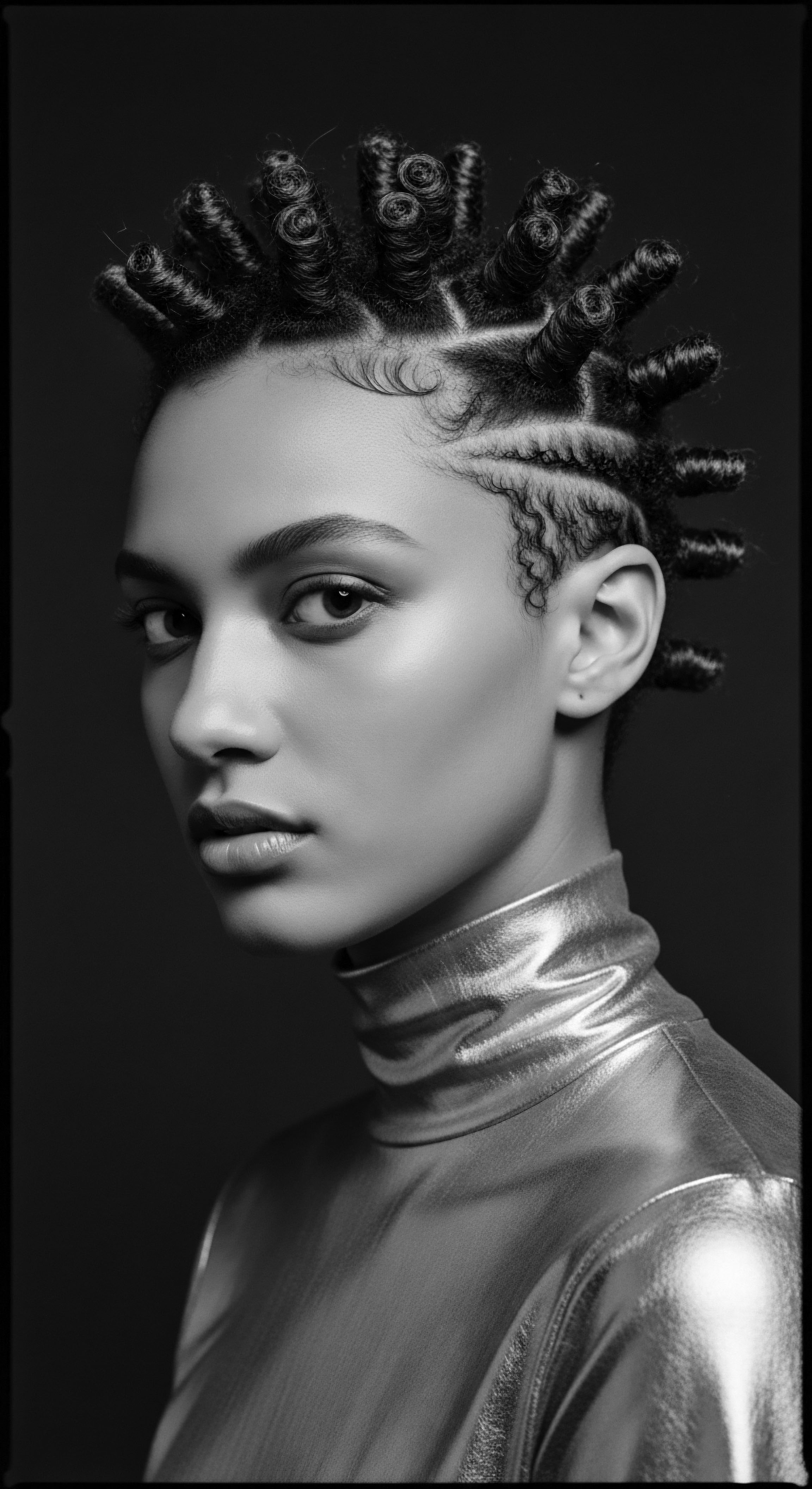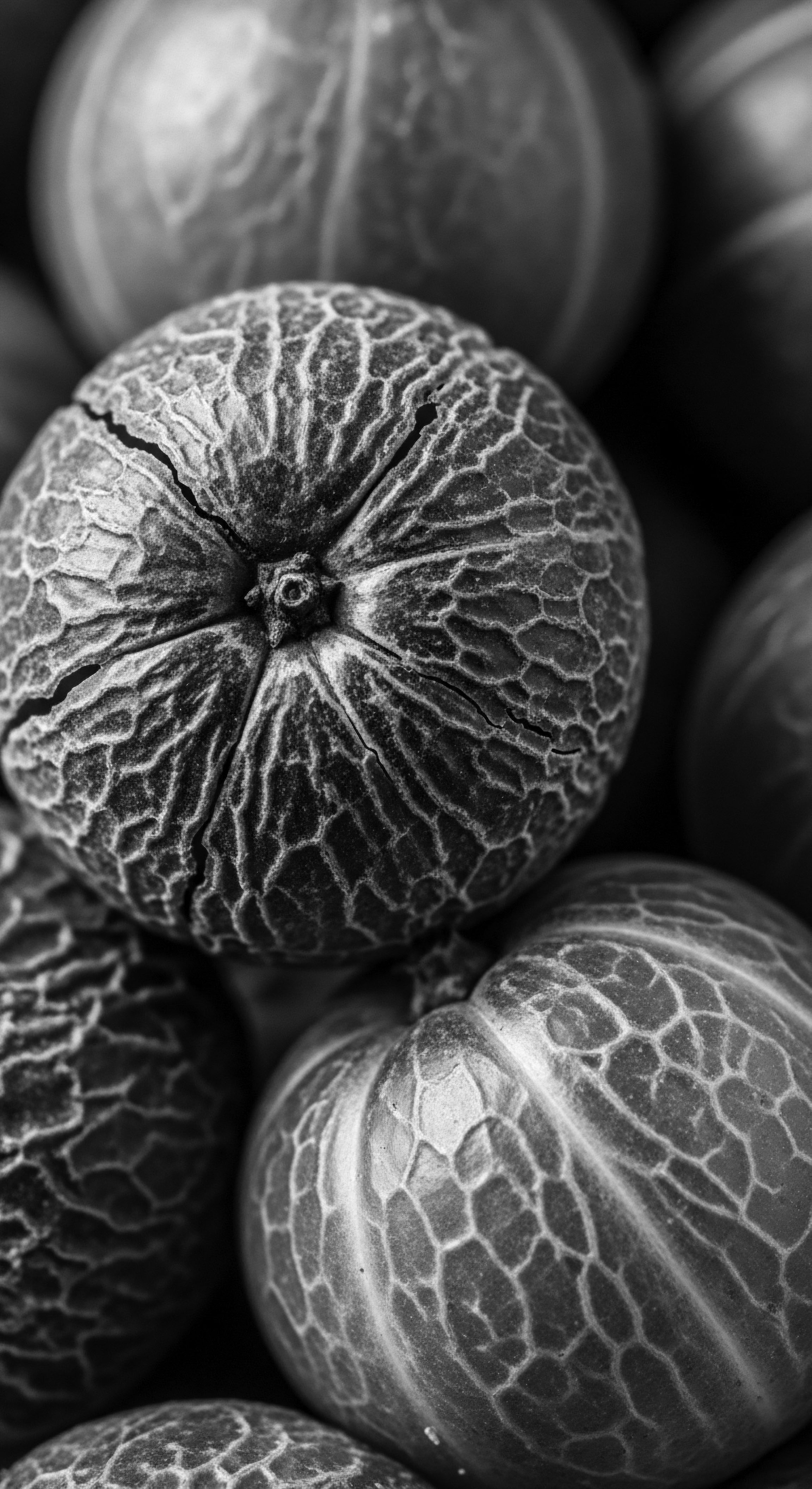
Roots
Consider for a moment the profound intimacy woven into the very strands that crown a head. For Black and mixed-race communities, hair has long held more than aesthetic value; it is a living document, a testament to ancestral practices, resilience, and a heritage deeply rooted in self-determination. When we ask about the economic impact of early Black beauty pioneers, we are not merely tracing lines on a ledger or charting business growth. We are, in fact, exploring the foundational acts of self-liberation, community building, and the quiet assertion of identity in a world often hostile to it.
These pioneers, with their knowledge of ancient ingredients and their audacious spirit, transformed personal care into collective economic power. They understood that tending to textured hair was not just about superficial appearance; it spoke to an inner radiance, a reclaiming of self that economic independence could fortify.
The origins of this economic force are found in kitchens, parlors, and hushed gatherings, far from the formal marketplaces that excluded Black enterprise. Early Black beauty pioneers recognized a profound need within their communities for products and services that honored the unique qualities of textured hair. Mainstream beauty industries of the era largely ignored or actively denigrated Black hair, offering products that often caused harm or promoted Eurocentric beauty standards. This created a fertile ground for innovators.
They drew upon a lineage of ancestral knowledge, often passed down through generations, regarding the properties of natural oils, herbs, and styling techniques. These practices, once confined to intimate family circles or informal community exchanges, began to form the nascent structure of an industry.

Foundations of Textured Hair Economics
The economic landscape for Black women in the late 19th and early 20th centuries presented stark realities. Options for employment were severely limited, often confined to domestic labor, laundry work, or agricultural roles, all low-paying and arduous. Within this context, the emerging Black beauty industry offered a pathway to economic independence, a true revolution for many. The hair anatomy of Black and mixed-race individuals, characterized by its unique curl patterns, coil formations, and varying porosity, demanded specialized care.
This specific need became the cornerstone of a burgeoning market. Pioneers understood that a ‘one-size-fits-all’ approach, dictated by dominant beauty ideals, simply did not suffice.
Early Black beauty pioneers transformed personal care into collective economic power, building an industry that honored textured hair and fostered self-liberation.
Consider the entrepreneurial spirit that thrived in this environment. It was a spirit born of necessity and shaped by a deep sense of community responsibility. These individuals were not just selling products; they were selling dignity, self-esteem, and a means for others to earn a living.
The economic impact was not just about the wealth accumulated by a few titans; it was about the thousands of women who found employment as sales agents, beauticians, and trainers, often earning significantly more than they could in traditional labor roles. This represented a significant shift in economic autonomy for Black women.

Ancestral Practices and Product Genesis
Before formal businesses, the care of textured hair was rooted in ancestral practices. Ingredients sourced from the earth and traditional methods of cleansing, moisturizing, and styling were part of a lived heritage. Shea butter, various plant oils, and natural cleansers were common, their use informed by generations of practical application.
When early pioneers began to formalize this knowledge into salable products, they built upon this inherited wisdom. The creation of hair pomades, scalp treatments, and specialized tools was a direct response to the specific biological needs of textured hair, often addressing common issues like dryness, breakage, and scalp conditions that were overlooked by the mainstream.
The initial products were often simple, homemade formulations, reflective of the resourceful spirit of the time. These early formulations, however, were not mere curiosities. They were meticulously developed by women who understood the intricate biology of hair and scalp health. The scientific acumen, even if empirically derived, was undeniable.
These women were chemists in their own right, blending, testing, and refining until they achieved formulations that addressed the unique needs of their community’s hair. This scientific exploration, deeply tied to practical need, became a hallmark of the early Black beauty industry.
- Shea Butter ❉ A staple in many West African communities, renowned for its moisturizing and protective qualities, often used to soften and seal moisture into hair strands.
- Castor Oil ❉ Valued for its purported ability to strengthen hair and promote growth, a common ingredient in traditional scalp treatments across the diaspora.
- Herbal Infusions ❉ Various herbs, dependent on regional availability and ancestral knowledge, were steeped in oils or water to create rinses and treatments for scalp health and hair vitality.
The economic footprint of these pioneers, even in their earliest iterations, was profound. They created a market where none truly existed for their specific needs, thereby redirecting significant spending power within Black communities. This self-contained economy provided a lifeline for many, enabling a degree of economic stability and opportunity in the face of systemic discrimination.

Ritual
The economic impact of early Black beauty pioneers extended far beyond the immediate exchange of goods and services; it deeply informed the rituals of care, community, and self-expression that defined Black life. This industry, born from necessity and nurtured by collective wisdom, became a vital economic ecosystem. It was a realm where capital circulated within Black communities, creating jobs, building infrastructure, and establishing institutions that supported broader movements for racial uplift and social justice. The tenderness of a hair-care ritual, performed in a salon or at home, became a catalyst for tangible economic and social progress.

Shaping Commerce and Community Structure
The establishment of formal businesses by figures like Annie Turnbo Malone and Madam C.J. Walker marked a significant shift from informal home-based practices to large-scale enterprises. Annie Turnbo Malone, often credited with laying the groundwork for the modern Black hair care industry, built a formidable empire around her Poro products. In 1918, she established Poro College in St.
Louis, a multifaceted institution that served as a manufacturing plant, a beauty school, and a community gathering space. This was a powerful economic engine, training thousands of Black women as sales agents and beauticians, thereby providing them with skills and a pathway to financial independence during a time of limited opportunities.
Madam C.J. Walker, who learned from Malone, created her own expansive network. Her Madam C.J. Walker Manufacturing Company, at its peak, employed an estimated 40,000 people, predominantly Black women, as commission-based sales agents.
These “Walker Agents” not only sold products but also taught hair care techniques, fostering a sense of professionalism and shared purpose among Black women across the country and even internationally. The economic model was ingenious ❉ it leveraged direct sales and a strong community network, circumventing discriminatory mainstream distribution channels.
This approach had profound economic consequences. These businesses generated substantial wealth that was often reinvested into Black communities. For instance, Annie Malone, a millionaire by the end of World War I, generously supported African American organizations and charities, including the St. Louis Colored Orphans Home, which was later renamed the Annie Malone Children’s Home.
Madam C.J. Walker similarly used her wealth for philanthropic endeavors, donating to the NAACP, the Tuskegee Institute, and supporting anti-lynching campaigns. This active reinvestment of capital was not just charity; it was a strategic strengthening of the economic and social fabric of Black America.
The beauty industry built by Black pioneers became a powerful economic engine, creating jobs, nurturing entrepreneurship, and funding vital community institutions.
The beauty salon itself became a cornerstone of economic activity and social life in Black neighborhoods. These spaces were not just places for styling hair; they were hubs for political discussion, community organizing, and shared cultural experience. They provided a safe haven for Black women to gather, exchange information, and strategize in an era of pervasive segregation and discrimination.
The ability to open a salon or become a beautician offered women economic autonomy, freeing them from dependence on white employers or other limited employment options. Pauline Humphrey, for example, not only opened Iowa’s first beauty shop for African Americans in 1935 but also established the Crescent School of Beauty Culture in 1939, providing a stepping stone for many to gain economic independence.
The sheer volume of economic activity centered around textured hair cannot be overstated. Black consumers consistently spent a disproportionate amount on hair care, reflecting the deep cultural significance and perceived value of hair within the community. This sustained demand provided a robust market for Black-owned businesses, even during times of broader economic hardship.
Consider the following comparison of entrepreneurial models:
| Model Home-Based Beauticians |
| Key Features and Heritage Link Rooted in ancestral knowledge, often operating out of private homes or community spaces, offering bespoke care. These were intimate settings where traditional care rituals were preserved. |
| Direct Economic Impact Provided independent income for individuals, enabled local community services, and built foundational client relationships. |
| Model Direct Sales Agent Networks |
| Key Features and Heritage Link Pioneered by Malone and Walker, extending reach through thousands of Black women who sold products door-to-door, often with training on proper hair care. This system carried knowledge and commerce into every corner of the diaspora. |
| Direct Economic Impact Created widespread employment opportunities, offering flexible work and economic uplift for women with limited formal options, spreading wealth throughout communities. |
| Model Beauty Colleges and Training Centers |
| Key Features and Heritage Link Institutions like Poro College and Lelia College offered structured education in cosmetology, business, and even chemistry for Black women. They were cultural and economic centers. |
| Direct Economic Impact Equipped thousands with professional skills, leading to self-sufficiency and the establishment of independent salons, building an educated workforce within the industry. |
| Model These varied models collectively built an economic infrastructure that fostered autonomy, shared wealth, and cultural preservation within Black communities. |
The influence of these pioneers was not only about creating wealth but also about defining a market that had long been ignored. The Black hair care industry has a current estimated value of over $2.5 billion, with Black women spending significantly more on ethnic hair products than their non-Black counterparts. This financial power, though often undervalued by mainstream institutions, stems directly from the groundwork laid by these early entrepreneurs who recognized and catered to the specific needs of textured hair.

Relay
The economic impact of early Black beauty pioneers, especially through the lens of textured hair heritage, extends into the present day, a powerful relay of influence across generations. This section analyzes the sustained economic legacies, the interplay with broader social movements, and how the seeds planted by these innovators continue to shape the contemporary beauty landscape, always acknowledging the deep cultural roots from which they sprang.

Intergenerational Economic Legacy and Cultural Capital
The wealth generated by pioneers like Annie Turnbo Malone and Madam C.J. Walker did more than simply enrich individuals. It initiated a crucial economic tradition of self-help and community investment within Black America, a direct response to systemic racial economic exclusion.
During the Jim Crow era, when white banks rarely offered loans to Black customers, Black communities formed their own financial institutions and businesses, often inspired by or directly linked to the successes of these beauty magnates. The existence of Black-owned businesses in the beauty sector provided tangible proof of Black economic capability and served as a blueprint for entrepreneurship across various fields.
The ‘cultural capital’ accrued through the Black beauty industry also holds significant economic value. Textured hair, its styling, and its care became powerful symbols of racial pride and identity, especially during movements like the Harlem Renaissance and the Black Power era. This cultural affirmation spurred consumer loyalty and a willingness to invest in products that celebrated rather than sought to conform Black hair to Eurocentric standards.
While hair straightening products were part of the early market, pioneers like Malone and Walker emphasized scalp health and hair vitality, promoting a holistic approach to beauty that aligned with ancestral wellness philosophies. This emphasis on health and self-acceptance, even within the context of altered styles, was a subtle yet powerful economic driver, as it fostered a sustained, rather than fleeting, consumer base.
The economic legacy of early Black beauty pioneers is a story of wealth creation, community investment, and the enduring power of cultural identity in shaping market demand.
The schools established by these pioneers, like Poro College, continued to produce skilled beauticians for decades, even through the Great Depression, when other employment opportunities dwindled. This steady supply of trained professionals ensured the longevity of the Black beauty services sector, providing stable, independent livelihoods for countless Black women when other doors remained closed. This investment in human capital, through education and skill-building, represented a long-term economic strategy that continues to influence vocational training and entrepreneurship within Black communities today.

Modern Reverberations and Persistent Challenges
The ripple effect of these early economic ventures is evident in the contemporary beauty industry. The Black hair care market today is a substantial segment, projected to reach approximately 4.9 billion by 2033. Black women, as a consumer group, continue to drive innovation and demand for specialized products. Despite this immense purchasing power and high rates of entrepreneurship among Black women, Black-owned beauty brands still face significant hurdles, particularly in securing adequate investment and equitable distribution channels within the broader market.
A 2018 study noted that African American women entrepreneurs accounted for 20 percent of all women-owned businesses and had the highest rate of growth in new companies between 2017 and 2018. However, a digitalundivided report found that for the first time in 2021, Black and Latina female startup founders in the US received only slightly over 1% of venture capital investment. This disparity highlights that the economic playing field remains uneven, a direct historical echo of the initial challenges faced by pioneers like Malone and Walker who had to create their own channels.
The concept of a “minority hair tax,” where products for textured hair are often more expensive than those for straight hair, persists, showcasing an ongoing economic challenge rooted in historical market neglect. One study from August 2022 found a significant price difference, with coily/curly hair products being more expensive overall. This suggests that while the market for textured hair has grown, equitable pricing and access remain issues that the early pioneers, in their pursuit of accessible beauty solutions, would have undoubtedly addressed.
The legacy of early Black beauty pioneers is a constant reminder of the economic ingenuity born from cultural necessity and the deep connection between hair heritage and economic self-determination. The initial creation of a market, the establishment of employment networks, and the philanthropic reinvestment in communities laid a blueprint for economic survival and flourishing in the face of systemic adversity. The work of these pioneers continues to inform the conversations around Black economic empowerment and the intrinsic value of culturally specific industries.

How Did Early Pioneers Adapt Their Economic Models to Societal Barriers?
Early Black beauty pioneers faced immense societal barriers, including racial segregation, limited access to formal education, and outright discrimination in financial institutions. Their economic models were ingenious adaptations to these oppressive conditions.
- Direct Sales and Community Networks ❉ Denied access to mainstream retail and distribution, pioneers like Malone and Walker created vast networks of door-to-door agents. This allowed them to reach Black consumers directly, building loyalty and a sense of shared purpose while simultaneously providing employment and economic agency to thousands of Black women across the nation and even in the Caribbean.
- Integrated Business Hubs ❉ Poro College, established by Annie Malone, exemplifies an integrated business model. It was not simply a factory or a school but a comprehensive center for manufacturing, education, and community gathering. This multi-functional approach maximized resources and solidified the business as a central pillar of the community, fostering economic self-sufficiency.
- Philanthropic Reinvestment ❉ A significant portion of the wealth generated was systematically reinvested into Black communities through donations to educational institutions, orphanages, and civil rights organizations. This philanthropic tradition strengthened the social infrastructure that supported the businesses, creating a virtuous cycle of economic and social uplift.

What is the Enduring Economic Value of Black Beauty Salon Spaces?
Black beauty salons, forged in the era of early pioneers, maintain an enduring economic value that transcends mere commercial transactions. Historically, and still today, these salons function as vital community centers and economic anchors.
The salons provided economic autonomy for Black women in an era when most employment opportunities were limited and controlled by white employers. The ability to own or work in a salon offered a path to financial independence and respectability. They were safe spaces where Black women could pool resources, share information about job opportunities, housing, and political movements, and engage in informal economic exchanges that supported the wider Black business ecosystem. Even during periods of economic struggle, barbershops and beauty salons in Black neighborhoods often remained thriving, serving as essential hubs of social and economic success.
This resilience speaks to their intrinsic value beyond simple commerce; they are repositories of cultural memory and vehicles for community wealth. The beauty salon space itself became a micro-economy, supporting not only the stylist but also ancillary businesses and community initiatives.

Reflection
The economic impact of early Black beauty pioneers on heritage is a profound and living narrative, echoing through the very strands of textured hair. It is a story not merely of commerce, but of creation ❉ the creation of industries, of opportunities, and of dignity in the face of systemic erasure. These trailblazers did more than build businesses; they forged a blueprint for self-determination that resonated across communities and generations. Their journey, born from the intimate knowledge of textured hair, moved from elemental biology and ancient practices to manifest as powerful economic forces.
The ‘Soul of a Strand’ ethos, with its reverence for ancestral wisdom and its recognition of hair as a sacred part of self, finds deep validation in this history. The early pioneers understood that care for textured hair was a form of self-preservation and an act of cultural pride. Their innovative spirit, combining empirical science with inherited practices, demonstrated a profound respect for the resilience and beauty inherent in Black and mixed-race hair traditions. The economic systems they established were not abstract concepts; they were lifelines, providing employment, education, and a sense of collective power.
This legacy continues to shape the textured hair landscape today. The vibrant market for Black hair care, the continuing push for equitable investment in Black-owned businesses, and the enduring significance of the Black beauty salon as a community hub all bear witness to the foundational work of these pioneers. They remind us that true economic impact, especially within the context of heritage, extends beyond financial gains to encompass the empowerment of a people, the preservation of cultural identity, and the cultivation of an industry that celebrates diverse beauty. The history of early Black beauty pioneers remains a testament to ingenuity, compassion, and an unyielding commitment to the well-being of their communities.

References
- Bundles, A’Lelia P. On Her Own Ground ❉ The Life and Times of Madam C.J. Walker. Scribner, 2001.
- Peiss, Kathy. Hope in a Jar ❉ The Making of America’s Beauty Culture. University of Pennsylvania Press, 1998.
- Malone, A. T. Poro Hair and Beauty Culture. Poro College, 1922.
- Wingfield, Adia Harvey. Doing Business with Beauty ❉ Black Women, Hair, and Power in a Segregated World. Rowman & Littlefield Publishers, 2008.
- Ebony Magazine. “Black History ❉ Pioneering African American Entrepreneurs.” Johnson Publishing Company, various issues.
- White, Monica. Freedom’s Dance ❉ Socially Engaged Art and the Black Arts Movement. University of North Carolina Press, 2021.
- Nielsen Company. Black Impact ❉ Consumer Categories Where African Americans Move Markets. Nielsen Holdings N.V. 2018.
- Tate, Shirley Anne. Black Beauty ❉ Shade, Hair and Anti-Racist Aesthetics. Ashgate Publishing, 2007.
- Morgan, Joan. When Chickenheads Come Home to Roost ❉ A Hip-Hop Feminist Breaks It Down. Simon & Schuster, 1999.
- Hooks, Bell. Black Looks ❉ Race and Representation. South End Press, 1992.
